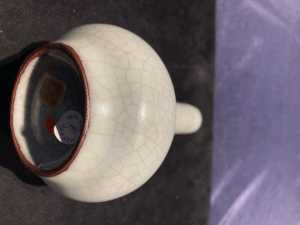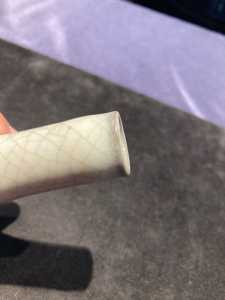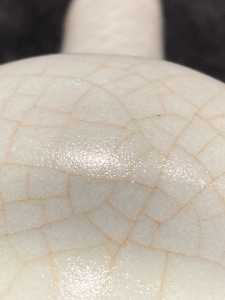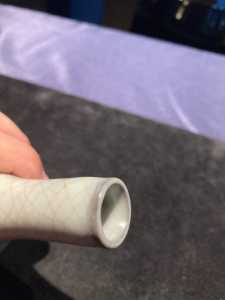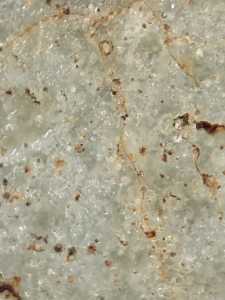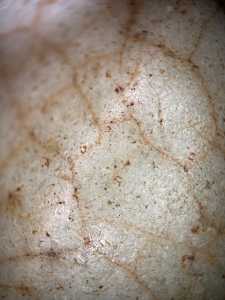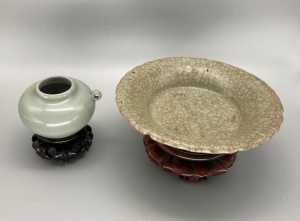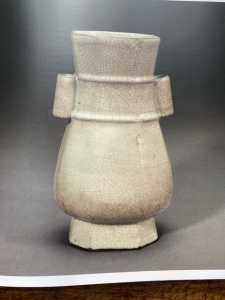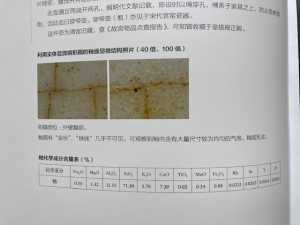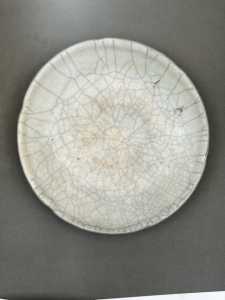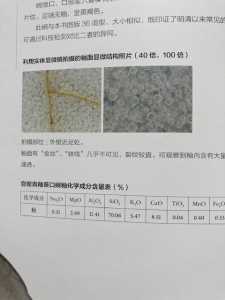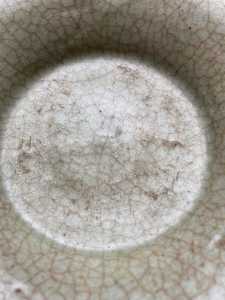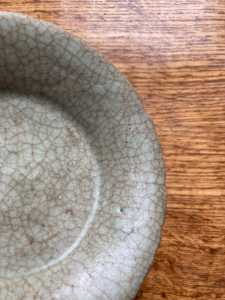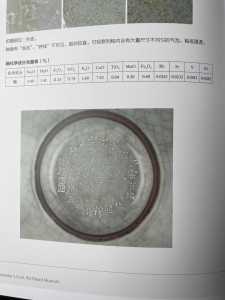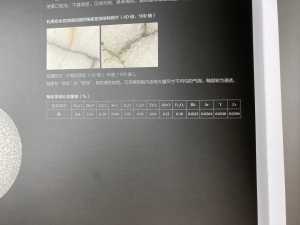The Chinese and Asian Art Forum. For Fans, Collectors and Dealers.
 Basic Rules For the BidAmount Asian Art Forum: Talk about whatever you want. You can even discuss and offer things that are for sale if they are authentic. Maximum image file size per post is 2 MB. Images of 700pxl x 700pxl are optimal if saved at a medium resolution. Be respectful of others and enjoy yourself. Click the YouTube link for a brief tutorial on using the forum. You can also EMBED Videos by cutting and pasting from You-Tube, Vimeo etc.
Basic Rules For the BidAmount Asian Art Forum: Talk about whatever you want. You can even discuss and offer things that are for sale if they are authentic. Maximum image file size per post is 2 MB. Images of 700pxl x 700pxl are optimal if saved at a medium resolution. Be respectful of others and enjoy yourself. Click the YouTube link for a brief tutorial on using the forum. You can also EMBED Videos by cutting and pasting from You-Tube, Vimeo etc.
NOTE: To post an item or add a new post, click open the category title from the FORUM LIST, and CLICK the Blue ADD TOPIC button.
Greetings, everyone! A fun trip to New York's Asia Week, but happy to be home.
I think rather than a large post, I'd like to just post a piece or two every few days or so... that way it's not overload.
As most of you know, I have a relationship with Christie's, and since I was only there a few days, I spent my time studying the J.J. Lally collection, and pieces in the general sale, rather than trying to go to every auction/gallery. In hindsight, I will likely consider a 4 day trip next visit, and take in Sotheby's and Bonham's at the very least.
The number one walk away is something that we're all familiar with, but perhaps just don't do enough - you have to handle and carefully examine as many quality/genuine period pieces to fully understand how to identify the genuine article. No amount of photos/videos or visits to the museum can equate.
One of the best examples why physical handling is critical to understanding authenticity that I can share from this trip is the Southern Song Guan vase that sold for $2.5 million USD.
https://www.christies.com/lot/lot-6413386
Christie's only posted 3 photos online (not sure about the catalog), and there are several important aspects that the photos do not show (or can not show).
First, the weight is remarkable for such a small vase (5 1/8" tall). Thick potting, thick glaze. The weight reminded me of holding a bronze vessel of similar size.
Second, the construction is clearly a coiling, difficult to see through the thick glaze, but when you stare at it long enough, you can see the subtle spiral. Photos do show the neck has ring just before the mouth, but looking inside, you can see the inner portion of the neck also has a rib. (sorry no pic of that).
Third, the foot is deep. The straight on photo by Christie's does not allow you to see the depth of the foot ring. Remember, this is a small vase (5 1/8")... the depth of the foot is 1/2"-3/4".
Fouth and final, the texture is quite different than I expected. From the Christie's photos, the vase looks quite smooth, but that is far from true. The texture is almost like a salt glaze due to the abundance of fine bubbles trapped in the glaze.
One of the things I try and do when I'm previewing is to ask myself two questions, one before holding it, and one after.
Before holding, I ask myself, 'if I saw this piece at a sale, would I walk by it without checking it out?' The answer to almost all of the JJ Lally pieces was a prompt 'I would definitely not walk by this piece', but not all.
After handling, I ask myself, 'would I be able to tell the difference between this piece and a fake/modern copy?' This is a tricky question.
While handling pieces like this, it is easy (really easy) to be overwhelmed the the aesthetic beauty, and forget about the technical aspects. You have to remind yourself that you will likely never see the piece you're holding ever again (since it is an auction), so try and take in all of the features as best you can.
Final point I want to make on this thread is to say that what makes the J.J. Lally so incredible is not just the authenticity of the collection, but attention paid to the aesthetics - these are not just period pieces, but chosen for having qualities that elevate them above others that share the same age, glaze, and form.
While it might seem a daunting task to pursue such high standards, my response to all of you is that, yes, for Chinese wares that have already achieved 6 and 7 digit values in the market place, you might not be able to build a collection around such wares. However, there are so many other forms of Asian art, modern and ancient, that are very affordable. By building collections of these lower cost arts, and by sharing and educating others of the history and quality of these wares, you will not only elevate awareness, but inevitaably you will build a following of collectors that will share your passion, drive up the market value, and spend good money to acquire the finest examples - such is the legacy of J.J. Lally.
Thank you for your very interesting information about this valuable little vase. I had noticed the vase in the sale because of the golden thread crackle, as I have a Longquan dish with a similar type of glaze, although mine is the poor man’s example.
It is normally considered that the Guan glaze has the golden thread crackle and the Ge glaze has the iron wire and golden thread crackle, but just to add confusion there are four pieces of Ge ware in the Palace Museum collection which have just the golden thread crackle. Below is a photograph showing my dish on the pages of the book of Ge ware in the collection. The dish in the book is shown to scale.
You have mentioned the bubbles under the glaze and I have seen this described on Ge ware as resembling ‘oily skin’. Below is a close up of the glaze on my dish showing the bubbles in the glaze.
The type of clay used had a very high iron content and so perhaps this is part of the reason why the vase is relatively heavy and of course it is due to this high percentage of iron oxidising which formed the pattern in the cracked glaze rather than being stained in later Guan type ceramics.
My dish shows how the Longquan potters were also able to produce this Guan / Ge type glaze using the same type of black body clay. Below is a photograph showing a comparison of the crackle glaze with the more typical celadon glaze of the Song dynasty.
@jeremy Good morning, early bird! You're like me in that respect... I get up, put the coffee pot on, and check out what's been posted, and listen to the birds wake up as the sun rises.
There are some differing opinions on the distinction of guan and ge wares. Why there may very well be physical differences, the one thing for certain is that genuine Song guan wares are imperial, and perhaps some ge wares, but not all ge wares.
Also notice, that the glaze on the JJ Lally guan vase is perfectly clean. The texture surface is not pitted at all, but rather finely bubbled...perhaps finely beaded is a better way of describing it. It is not semantics.... there is something different... a density to the glaze that prevents dirt from penetrating. In fact, all of the Song glazes were remarkably clean surfaced, but with signs of handling/wear.
This suggests a different material and/or method of glazing than you ge ware dish which looks quite similar.
I guess it is also possible your piece had been buried or something, which might explain the foreign matter (dirt) on the surface. However, I don't think that would explain the pitting.
Off the top of my head.... I seem to recall reading that the secret of Guan ware glaze was lost, and numerous attempts to copy the glaze have been made throughout the ages.
I was not suggesting that the quality of the glaze on my dish is equivalent to that on the Guan vase, my dish has lots of imperfections. What I meant is that the way in which the pattern was formed is virtually identical. I have read that the iron oxide was made to leach through the cracks by burying the pieces of Ge ware, but I have not found written evidence of this for Guan or Longquan ceramics.
However, what I have found is that when both the glaze on Ge and Guan examples it can be seen that the golden thread crackle is almost identical to that on my dish, which leads me to conclude that the glaze was formed in a very similar manner.
Below is a Ge ware vase in the Palace Museum collection with just the golden thread crackle and an image showing the glaze magnified
And below is a Guan bowl from the same collection, again with the glaze magnified
I think that one main difference with Guan crackle ware, apart from the quality of the glaze, is that the shade of the glaze tends to be bluish, whereas, the glaze on Ge ware can vary from cream though to green.
My dish has seen quite a bit of use through its quite long existence, but I am very happy to own it
Although the shade may vary on my screen to the actual one, below is a comparison of shades of the glaze of a Ge dish at the top, my dish in the middle and the Guan vase sold by Christie's.
@jeremy oh! I didn’t mean to suggest that you were comparing the quality of your dish and the Lally vase.
What I meant to say is that despite Guan and Ge wares looking so similar (both crackle glaze), I think they’re quite different physically based upon closer inspection of their textures and composition of minerals in the glaze.
If I were to make an analogy, it is like comparing cocoa powder with ground coffee- they look the same, but are quite different.
Although I do not know what the percentage of minerals where used for the glaze of my dish, due to the non-destructive testing carried out on the Ge and Guan pieces in the Palace Museum collection it showed that the composition of the minerals used was quite similar. I assume that the firing process is what would have made a difference.
@jeremy If you could post the findings on the mineral composition on the two glazes, I'd be interested to read them. As you said, they are likely very similar, but with matters of chemistry, trace elements and/or the configuration of how these elements/molecules align can have dramatic effects on the outcome.
It's been a very long time since I sat in a chemistry class, but as I recall the difference between isopropal alcohol and ethel alcohol is a single OH molecule, but there's a big difference in the outcome. Similarly, with regards to minerals, quartz comes in several forms and colors, but it typically only differs as a consequence of very trace elements.
I do think you are correct that the most dramatic difference is likely how they guan and ge wares were fired/constructed, but there is a lot of mystery about ge wares, so I'm not sure what information is available on this area of study.
Below is the published data for a Guan bowl in the Palace Museum collection for your reference
And below is the glaze composition of a Ge bowl in the collection
The noticeable difference between these two bowls is the amount of ferric oxide, but this may not be too relevant as other Ge ware had up to 0.94%.
If you have read Rosemary Scott's essay about the Guan vase sold at Christie's you may have noticed that she states the glaze contained around 15% calcium oxide, but the bowl in the Palace Museum collection shows only 7.43%, so it would appear that there was quite a variation in the amount of calcium oxide used and according to her essay the bowl in the Palace Museum collection has a similar amount to that used in the Longquan glazes, as well as Ge ware glazes.
As the items which have been tested are of significant cultural importance, I doubt that any piece has been broken off.
In Mr. Mowry's book he has provided a similar analysis of the glazes of the brown and black glazed examples and in his acknowledgements he mentioned that the tests were carried out with an electro-beam microprobe at Harvard University. So I assume that the analysis carried out on the Ge and Guan bowls may have been done in the same manner.
Thanks for visiting "The BidAmount Asian Art Forum | Chinese Art"
If you sell on eBay, or have a shop feel free to post images and descriptions and links.
Check back often for discussion about the latest news in the Chinese art and antique world. Also find out about the latest Asian art auctions at Sotheby's, Christie's, Bonhams and Tajans.
Auction results for: fine porcelain, ceramics, bronze, jade, textiles and scholar's objects. As well as Japanese, Thai, Vietnamese and other Asian cultures.
Thank you,
Peter Combs
Topics and categories on The BidAmount Asian Art Forum | Chinese Art
Kangxi vases, Kangxi dishes and chargers, Kangxi ritual pieces, Kangxi scholar's objects, Qianlong famille rose, Qianlong enamels, Qianlong period paintings, Qianlong Emporer's court, Fine porcelain of the Yongzheng period. Chinese imperial art, Ming porcelain including Jiajing, Wanli, Xuande, Chenghua as well as Ming jades and bronzes.
The BidAmount Asian Art Forum | Chinese Art
A free Asian art discussion board and Asian art message board for dealers and collectors of art and antiques from China, Japan, Korea, Thailand, Cambodia, Vietnam and the rest of Asia. Linked to all of the BidAmount Asian art reference areas, with videos from plcombs Asian Art and Bidamount on YouTube. Sign up also for the weekly BidAmount newsletter and catalogs of active eBay listing of Chinese porcelain, bronze, jades, robes, and paintings.
The art of calligraphy - and for the ancient Chinese it certainly was an art - aimed to demonstrate superior control and skill using brush and ink. Calligraphy established itself as one of the major Chinese art forms during the Han dynasty (206 BCE - 220 CE), and for two millennia after, all educated men were expected to be proficient at it.
The Museum’s collections of Asian art span nearly five millennia and encompass the cultures of China, the Himalayas, India, Japan, Korea, and Southeast Asia. In 2007, the Museum launched an initiative to create dedicated galleries for the collection, beginning with a gallery for the arts of Korea ...
Chinese art is full of symbolism, in that artists typically seek to depict some aspect of a totality of which they are intuitively aware.
China Online Museum is the finest online museum of Chinese art. It features Chinese calligraphy, painting, ceramics, bronzes, carving, and other artworks.
Chinese Ceramics & Works of Art. Overview Upcoming auctions Contacts Auction results ... Christie’s sales of Chinese ceramics and works of art showcase centuries of Chinese history. Held throughout the year in London, New York, Paris and Hong Kong, they attract a wide audience of collectors and connoisseurs vying for pieces as diverse as ...
Explore Asian Art Week. Contact the Specialist Department. Chinese Paintings ... Senior Specialist, Head of Sale. [email protected]. Tel:+1 212 641 5760. Bid in-person or online for the upcoming auction:Fine Chinese Paintings on 10 September 2019 at New York. Bid in-person or online for the upcoming auction:Fine Chinese Paintings on 10 ...
Discover an abundance of must-see art from all corners of a vast continent at Christie’s NY Asian Art Week. From contemporary classical and Chinese paintings to works with exemplary provenance from the Art Institute of Chicago, our Rockefeller Paza galleries will be full of ancient treasures and contemporary masterworks in a salute to the vibrant arts of Asia.
Sold to benefit The Art Institute of Chicago’s Asian Art Acquisition Fund, the sale features 84 lots with a focus on Ming and Qing porcelains, and offers a rare insight into the taste for collecting Chinese ceramics and works of art in the Midwest from the end of the 19th century through the 1980s. Highlights include two Wanli wucai garlic-head vases, a Qianlong mark and period, blue and ...
Specialist, Chinese Paintings, Christie's London Dr Malcolm McNeill is a Specialist in Chinese Paintings at Christie’s, based in London. He previously worked as an assistant curator of the Chinese collections and the Victoria and Albert Museum in London, as a researcher at the British Museum, and as a translator and tour guide at the National Palace Museum in Taipei.
The Christie's Education 2020 Conference: The Chinese Art Market 18 Jun 2019 Christie’s Education is delighted to announce our first international academic conference in Asia which will take place in Hong Kong from 26-27 November 2020 at the Hong Kong Convention and Exhibition Centre and will run in parallel with Christie’s Hong Kong Autumn Auctions.
The summer Chinese Art sale in Hong Kong will feature works of art from several private collections, including Qing porcelains and textile from the collection of the legendary Chinese art dealer A. W. Bahr (1877–1959), fine gilt bronze Buddhist sculptures from an old Hong Kong collection, an East Asian collection of Qing dynasty wine cups and jades, and a Japanese collection of Song ceramics ...
Sotheby's Chinese Works of Art Department holds two auctions each year in London, New York, Hong Kong and Paris.
Chinese Art - View Auction details, bid, buy and collect the various artworks at Sothebys Art Auction House.
With more than 340 Chinese works of art dating from the Neolithic to the Republic periods, highlights of this sale include a selection of Qing Imperial monochromes from the collection of Arnold and Blema Steinberg, early ceramics from the Art Institute of Chicago and Chinese porcelain and works of art from the collection of Henry Arnhold.
Results: Sotheby's Asia Week achieved $52.4 million in six strong auctions, exceeding pre-sale estimates. With 76.5% of lots sold and 60.3% of lots surpassing high estimates, the Asian art sales at Sotheby's indicate continued collector interest in the finest works of art from China, India and and the Himalayas.
Today's sale of Important Chinese Art will proceed as planned with sessions at 10 AM and 2 PM EDT. Sotheby's will be monitoring the weather conditions throughout the day and will be available to coordinate alternative bidding options should conditions make it difficult for clients to attend the auction in person.
Bonhams Chinese Art department is renowned for offering the finest works of art representing the richness and breadth of China's artistic heritage, particularly Imperial porcelain, white and spinach green jades, cloisonné and Buddhist art. Specialised international auctions are held globally, including London, Hong Kong and San Francisco.
Bonhams : Chinese Works of Art We use cookies to remember choices you make on functionality and personal features to enhance your experience to our site. By continuing to use our site you consent to the use of cookies. Please refer to our privacy and cookie policies for more information.
Bonhams Fine Art Auctioneers & Valuers: auctioneers of art, pictures, collectables and motor cars. We use cookies to remember choices you make on functionality and personal features to enhance your experience to our site. By continuing to use our site you consent to the use of cookies. ... Chinese Art (US) General enquiries
Bonhams : Fine Chinese Art We use cookies to remember choices you make on functionality and personal features to enhance your experience to our site. By continuing to use our site you consent to the use of cookies. Please refer to our privacy and cookie policies for more information.
Bonhams Fine Art Auctioneers & Valuers: auctioneers of art, pictures, collectables and motor cars Bonhams : Asian Art We use cookies to remember choices you make on functionality and personal features to enhance your experience to our site.
Bonhams are international auctioneers of fine Chinese and Japanese art. We specialise in rare Imperial and Export Chinese ceramics and works of art, as well as Japanese ceramics, fine and decorative works of art from the Neolithic Period to the 20th century. View on map
Bonhams Fine Art Auctioneers & Valuers: auctioneers of art, pictures, collectables and motor cars. We use cookies to remember choices you make on functionality and personal features to enhance your experience to our site. By continuing to use our site you consent to the use of cookies. ... Asian Art Bonhams. Work. 22 Queen St.
